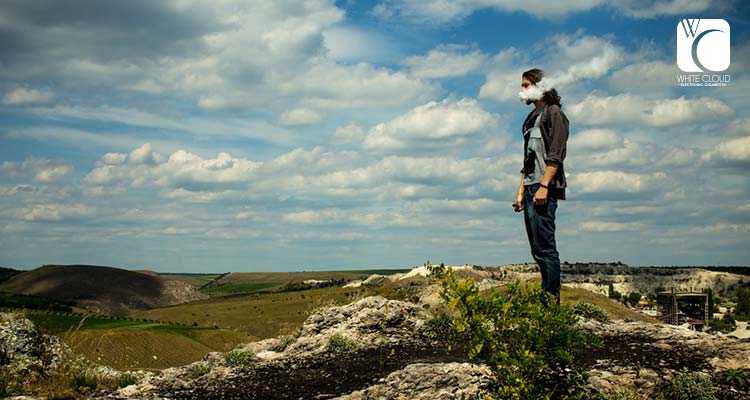The number of places you can vape in public is dwindling by the day. Dozens of state and city governments have prohibited e-cig use in outdoor spaces, and the U.S. National Park Service officially banned vaping in federal parks in September 2015. Advocates of these bans do not always claim scientific support; in fact, they often argue that information about the safety of e-cigarettes is lacking. However, there is plenty of research that suggests e-cigs are not only safer than tobacco cigarettes, but could be no more dangerous than many of the environmental pollutants we are exposed to on a daily basis.
Why Vaping Is Being Banned in Outdoor Spaces

When defending their vaping ban, the National Park Service cited concerns for the health and safety of their employees. Their concerns are understandable: A number of now debunked studies that reported finding formaldehyde and other harmful chemicals in e-cig vapor have received significant press attention in the U.S. Meanwhile, the many studies that verify the safety of e-cigs have somehow become buried in Google search results, so it is no surprise that public opinion of vaping is so dubious. Here is a list of some places in the U.S. that have outdoor e-cig bans and the reasoning behind the prohibition:
- Overland Park, KS, banned vaping in public places due to a supposed lack of information about the content of e-liquids. In fact, a 2014 study published in Regulatory Toxicology and Pharmacology confirmed that e-liquids are primarily composed of glycerin, propylene glycol, water, flavoring and nicotine.
- Costa Mesa, CA and Hawaii County, HI have banned e-cigs in their parks citing concerns about the hazards of secondhand e-cig vapor. However, a study confirmed that e-cig vapor does not expose bystanders to “toxic tobacco-specific combustion products.”
- Oviedo, FL, city officials banned outdoor vaping while claiming that the research about e-cig safety they reviewed was inconclusive. Perhaps they should have read Public health England’s evidence based report, which declares e-cigs to be 95 percent safer than tobacco cigarettes.
- Eatonville and Marysville, WA, are standing by erroneous data claiming that e-cigs are just as dangerous as tobacco cigarettes in their decision to ban vaping in public parks.
E-Cig Vapor vs. Outdoor Air Pollution
No matter where you live, you are constantly surrounded by both natural and human-made air pollutants. Natural air pollutants include pollen from plant life and sulfur and nitrogen oxides from volcanic eruptions, while the chief culprits of man-made air pollution are animal agriculture and fossil fuels. In particular, the burning of coal and gas to power homes and vehicles releases carbon monoxide, lead, volatile organic compounds and other particulate matter into the environment.
How does e-cig vapor compare to all of that gunk you’re breathing in? Actually, it appears to be much more benign: The above mentioned Regulatory Toxicology and Pharmacology study found that the number of harmful and potentially harmful constituents, or HPHCs, in e-vapor was consistent with ambient air blanks. Furthermore, e-cigs release eight times less nicotine than tobacco smoke, and e-cigs produce 1,500 times less HPHCs than tobacco cigarettes. In other words, e-cig vapor is theoretically no more threatening than a breath of fresh air.
The Hypocrisy of Outdoor Vaping Bans
We can’t prevent plants from producing pollen or stop volcanoes from propelling sulfur into the air, and no one is calling for a ban on burning charcoal for barbecues or gasoline for cars. Ongoing research has suggested that e-cigs pose far less danger to public health than any of those activities, so why single out vapers? Unfortunately, vaping bans are fueled by fear, not facts. With all of the misleading information about e-cigs still circulating, vapers must be persistent in their efforts to change the conversation around e-cigs to reflect reality.






